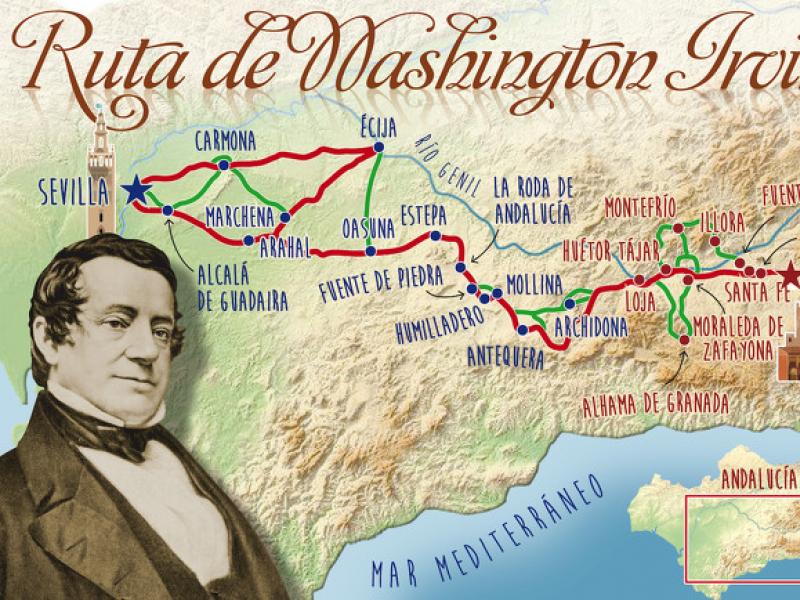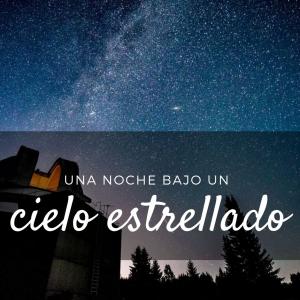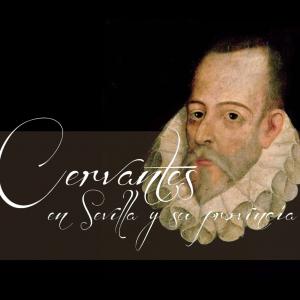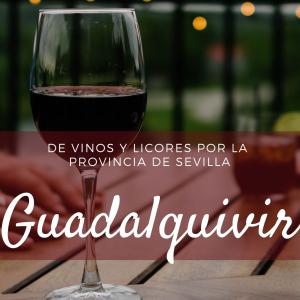The Washington Irving Route follows the footprints of the American romantic writer and diplomat in 1829, fascinated by the richness and the exoticism of the Hispano-Arabic civilisation together with his admiration for the figure of Christopher Columbus and the Discovery of America.
The route passes between La Rábida, in the province of Huelva, Seville and Granada, three obligatory stops in this journey that during the first half of the 19th century spread the romantic image of Andalusia throughout Europe and America, attracting numerous artists, writers, curious people and all kinds of travellers.
The Washington Irving route is configured as a link between Seville and Granada, two essential cities of the Hispano-Muslim civilisation. It is a historic route which was the scene of many armed conflicts, as well as a commercial route during times of peace
The itinerary runs through the province of Seville along the A-92 motorway from Seville to Granada, some 250 km of what was an essential means of communication during the Middle Ages. The route covers several stops in numerous towns of great heritage wealth, starting with the capital itself as a stepping stone to a route representative of Andalusian romanticism in which Muslim, Baroque and popular art intermingle in a rich heritage reflected in a multitude of palaces, castles, fortresses, baths and other public buildings.
Seville: The city of Seville, located at the banks of the Guadalquivir river, achieved the status of a true metropolis during its almost 550 years of Muslim history. The traces of the past are visible in its huge old town and its countless corners and buildings that invite visitors to tour the city, such as the Cathedral and the Giralda, the Alcázar, the Santa Cruz neighbourhood, the Jewish quarter, Triana, the Torre del Oro and the Torre de la Plata.
Leaving the capital, the route continues to other towns in Seville such as:
Alcalá de Guadaíra, where the Almohads built a gigantic fortification which includes, besides its two castles, the different flour mills and some interesting churches such as the church of Santiago and the church of San Sebastián. After skirting the village of Gandul, a magical location with an Almohad tower next to a Baroque palace, you will get to Carmona, a town surrounded by solid walls during the Andalusian times.
Carmona, where the Romans and the Arabs left many traces, such as the Roman Necropolis on the outskirts of the city and the old Muslim fortress, which is now a National Parador. The layout of the town centre belongs to this period, as well as many other works such as the Alcazar de Arriba, the Museum and numerous manor houses, churches and convents.
Further south is Marchena, a town with an amazing artistic heritage which reached its full identity in the Andalusian period. It is worth mentioning the castle of La Mota, a fortress built by the Almohads in the 12th and 13th centuries, and the temple of San Juan Bautista, which houses a museum by Zurbarán, its Ducal Square and its walled enclosure in which the gates of Morón and Seville stand out, the latter also known as Arco de la Rosa (Arch of the Rose).
The itinerary continues through the Sevillian countryside until Écija, the district capital of the Roman Baetica, which kept its importance in the Andalusian period. A Cervantine city that contains one of the richest monumental complexes in the province of Seville, also known as the "City of Towers", with important examples still preserved in the walled enclosure built by the Almohads. Its extensive historic quarter made it one of the capitals of the Andalusian Baroque architecture.
After leaving Écija, we enter Osuna, a town with one of the richest architectural and artistic complexes of the peninsula. At the top, some evidence of its past can be observed, such as the Roman quarries and necropolis, the University building of the Collegiate Church. At its feet, you will find the convent of La Encarnación and the Archaeological Museum. Downhill is the Plaza Mayor and long streets full of churches and noble palace-houses.
Close to the borders of the province of Seville you will find Estepa, located in a strategic position. Its hill is crowned by the castle, the church of Santa María and the convent of Santa Clara. Its Torre de la Victoria, its wall enclosure and its numerous historical buildings, both religious and civil, are also noteworthy. Don’t forget to try its Christmas sweets, as Estepa is known not only for its olive oil, but also for being the town of mantecado (shortbread)
In the midst of olive groves and famous for its olive oil production is La Roda de Andalucía, just before crossing into the province of Málaga. In an area which was uninhabited for centuries as it was a troubled “no man's land”. The Parish Church of Santa Ana and the Chapel of Slaves should be highlighted.







0 comments
New comment
The comments are moderated, so it takes a while to appear. If they contain offensive language they will not be published.